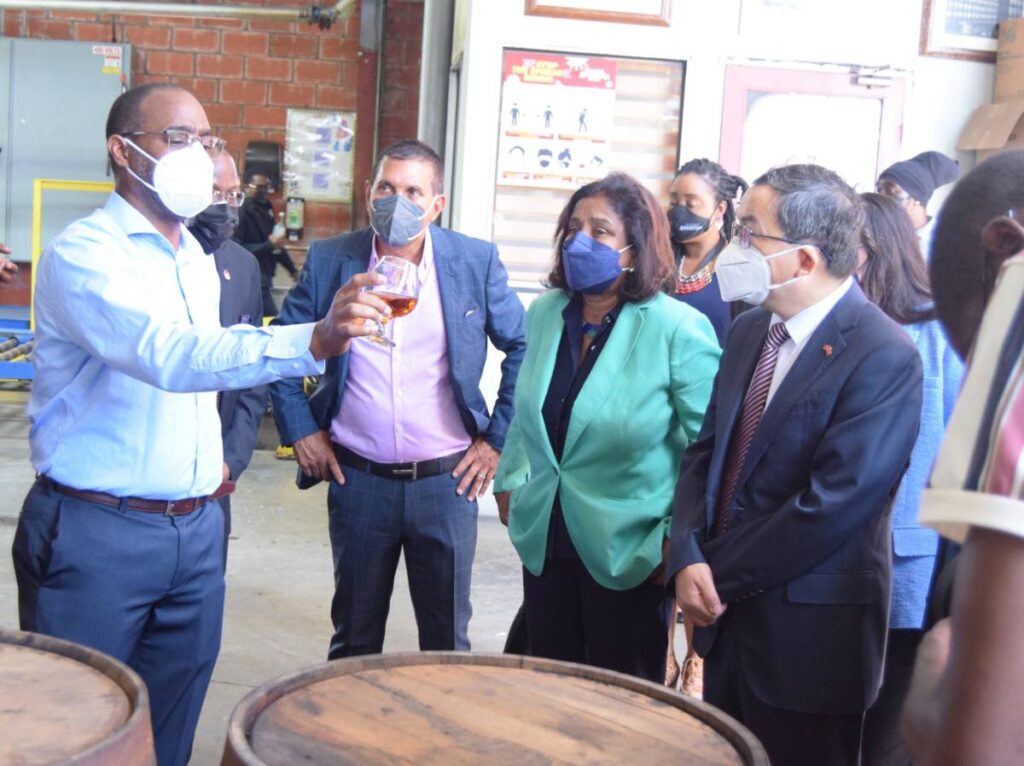Looking to China

At a time when it seems the logistical and political challenges to deepening global trade could not be more forbidding, Minister of Trade and Industry Paula Gopee-Scoon has made a plea to local manufacturers to get involved with and invest in China’s market.
Speaking at a tour of local companies, including Angostura, in which she participated alongside Chinese Ambassador Fang Qiu last Wednesday, Ms Gopee-Scoon urged Angostura to expand its market and special product line to make inroads into China and, by extension, Asia.
But trading with China is and never has been a straightforward matter.
According to some analysts, Trinidad and Tobago is a net importer of goods from China, with roughly US$340 million in imports as compared to US$291 million in exports. China is this country’s second-largest trading partner (the US is the largest, with almost ten times as much trade).
Historically, the main lynchpin of TT-China trade ties has been related to government-to-government arrangements surrounding the financing and construction of mega projects.
Ongoing examples of this include the billion-dollar ANR Robinson International Airport expansion, which is being done by a Chinese firm. The construction of a new wing at the Port of Spain General Hospital was also subject to a similar arrangement, but the involvement of the Chinese firm selected has fallen through.
Such projects have been subject to criticism due to the lack of transparency involved as well as the tendency to cherry-pick Chinese contractors on a sole-select basis. (The withdrawal of a Chinese firm from the hospital project is one exception in which the way has now been cleared for more local content – but the finer details of that state-run project remain subject to a great deal of secrecy.)
At the same time, China’s push to bolster its standing in the region through such economic arrangements has received mixed views. Though it is said key infrastructure gets constructed at competitive rates, the real costs, in terms of workplace conditions experienced by Chinese workers, erosion of values, and looming indebtedness, remain to be quantified.
There is not even much discussion on political platforms over this country’s foreign affairs when it comes to these issues.
Calling for private-sector involvement now, therefore, seems a reversal of what has been the case thus far. But despite a renewed effort by China to court business in the US, the memory of recent trade disputes lingers. The volatile political situation in the US, where Donald Trump’s anti-China stance is popular with his supporters, worsens the sense of uncertainty.
Assuming local manufacturers can marshal the resources to supply vast Chinese markets, it cannot be taken for granted that they would enjoy an even playing field. There are reports suggesting an increasingly hostile trade market there, a slower economy, and fraught geopolitics given China’s attempt to walk a tightrope in relation to Russia’s invasion of Ukraine.
And yet, many of the world’s largest banks continue to turn to China. While it is welcome, doing business with that country has to be undertaken with cautious optimism.

Comments
"Looking to China"